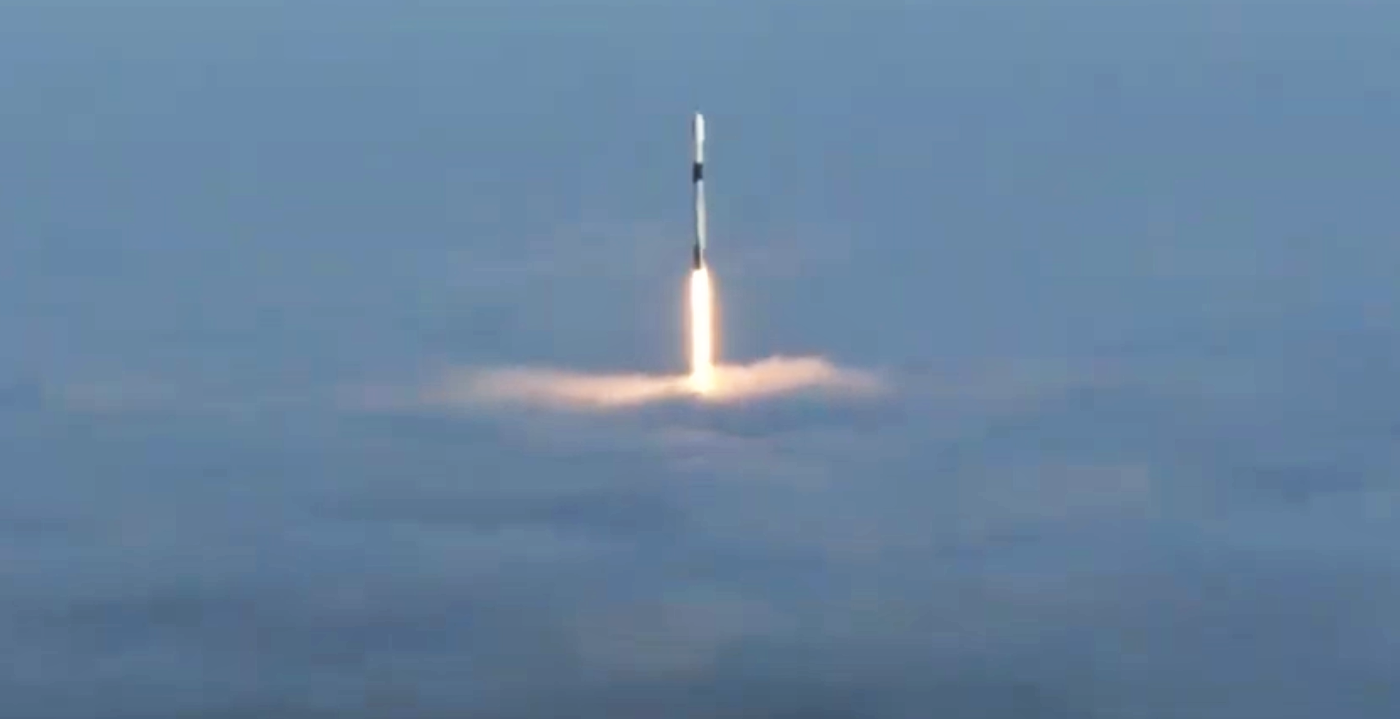
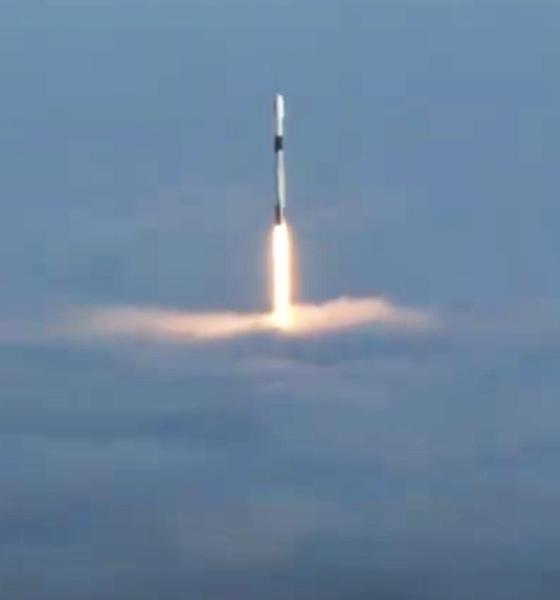
News
SpaceX’s Falcon 9 sticks foggy booster recovery at California landing zone
Update: SpaceX has successfully wrapped up the Radarsat Constellation Mission, likely its last launch from Vandenberg Air Force Base for six to nine months. Supporting its second mission, Falcon 9 booster B1051 completed a flawless launch and landing, returning to SpaceX’s pad-adjacent LZ-4 landing zone after a gentle, (relatively) low-velocity reentry at ~1.6 km/s (3700 mph).
Sadly, the sun was unable to beat back Vandenberg’s iconic fog layer and it’s unlikely that remote cameras (even including SpaceX’s own on-pad webcast cameras) captured anything more than gray fog. According to Teslarati’s photographers, the sonic booms produced by the returning Falcon 9 booster were as spectacular as ever, though.
Despite more than seven months of delays, the Canadian Space Agency (CSA) can finally rest now that all three Radarsat Constellation spacecraft are safely in orbit, completing what is arguably the most arduous leg of most spacecraft journeys. Valued at more than $1 billion, SpaceX has also successfully launched its most expensive payload by a large margin, adding to Falcon 9’s increasingly impressive record of reliability.




SpaceX is just hours away from its sixth Falcon 9 launch of 2019, likely the company’s last Vandenberg Air Force Base (VAFB) mission for the rest of the year (and possibly longer).
Flight proven Falcon 9 booster B1051.1 has been assigned to the launch and will attempt to return to SpaceX’s LZ-4 landing zone after sending Canada’s Radarsat Constellation Mission (RCM) on its way to orbit. Likely weighing approximately 5000 kg (11,000 lb), RCM is comprised of a trio of Earth observation spacecraft with large surface-scanning radars as their primary payloads. At a cost of more than $1 billion, RCM will be the most expensive payload SpaceX has ever attempted to launch. Falcon 9 has a 13-minute window for launch but liftoff is scheduled to occur at 7:17 am PDT (14:17 UTC) on Wednesday, June 12th.
As it stands, Falcon 9’s RCM launch will last just over one hour from start to finish. B1051 will separate from Falcon 9’s upper stage, fairing, and payload and perform a return-to-launch-site (RTLS) recovery, landing at SpaceX’s LZ-4 pad less than eight minutes after liftoff.

LZ-4 sits barely a quarter of a mile away from SLC-4E, the SpaceX-leased pad that B1051.1 will lift off from. Sadly, B1051 is unlikely to remain at SLC-4 after its (hopefully successful) landing at LZ-4 due to the fact that SpaceX has no public missions scheduled to launch from VAFB until Q1 2020 at the earliest. In fact, SpaceX is reportedly planning major organizational changes – set to begin soon after this launch is complete. As such, RCM could be SpaceX’s last launch from California for at least the next six months, a period of downtime that could easily grow to a year or more if tenuous 2020 launch dates suffer payload-side delays.
SpaceX currently has three launches scheduled from its Vandenberg pad in 2020, although one, two, or even all three could easily slip into 2021 based on the limited information available about the payloads in question. In 2021, SpaceX has a fairly busy VAFB manifest of at least six possible launches – possibly more if 2020 missions slip.
Regardless, RCM will be a good temporary send-off to SpaceX’s launch activity in California. Press photographers – unaffiliated with SpaceX – will have the first opportunity ever to remotely capture images of a Falcon 9 booster landing in daylight. Additionally, weather permitting, Vandenberg Air Force Base makes for an exceptionally beautiful venue for rocket launches thanks to the vistas and setting offered by Northern California and the Pacific Ocean.
Current forecasts suggest that the traditional fog layer will begin to clear at 7am local time, around the same time that SpaceX’s RCM webcast will kick off. With any luck, the photographers’ remote cameras will be greeted by a clear Pacific morning come liftoff.
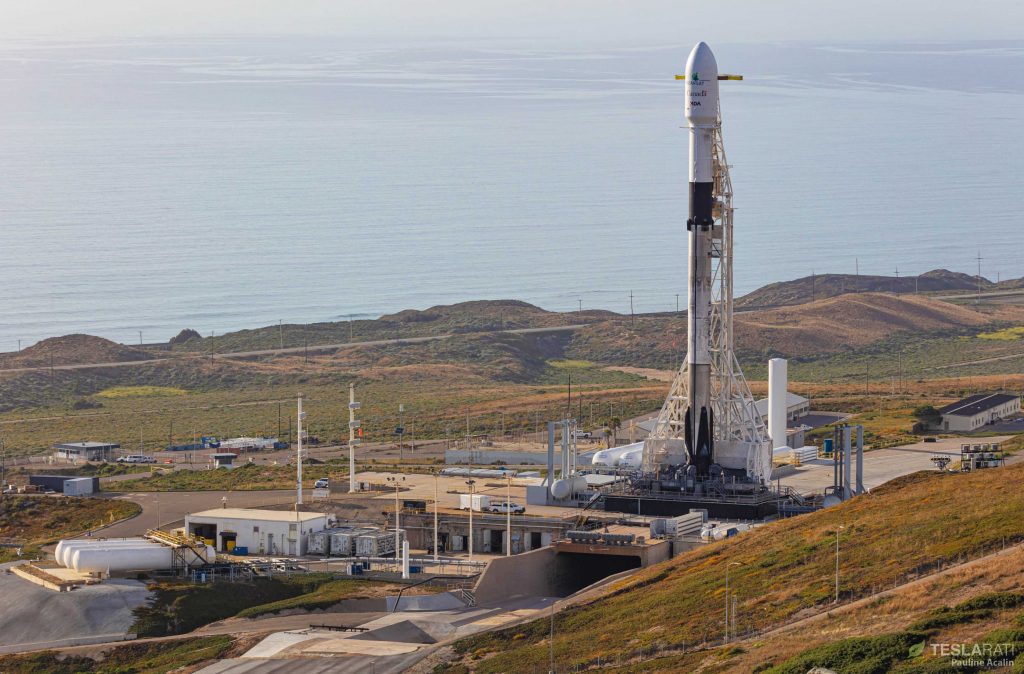
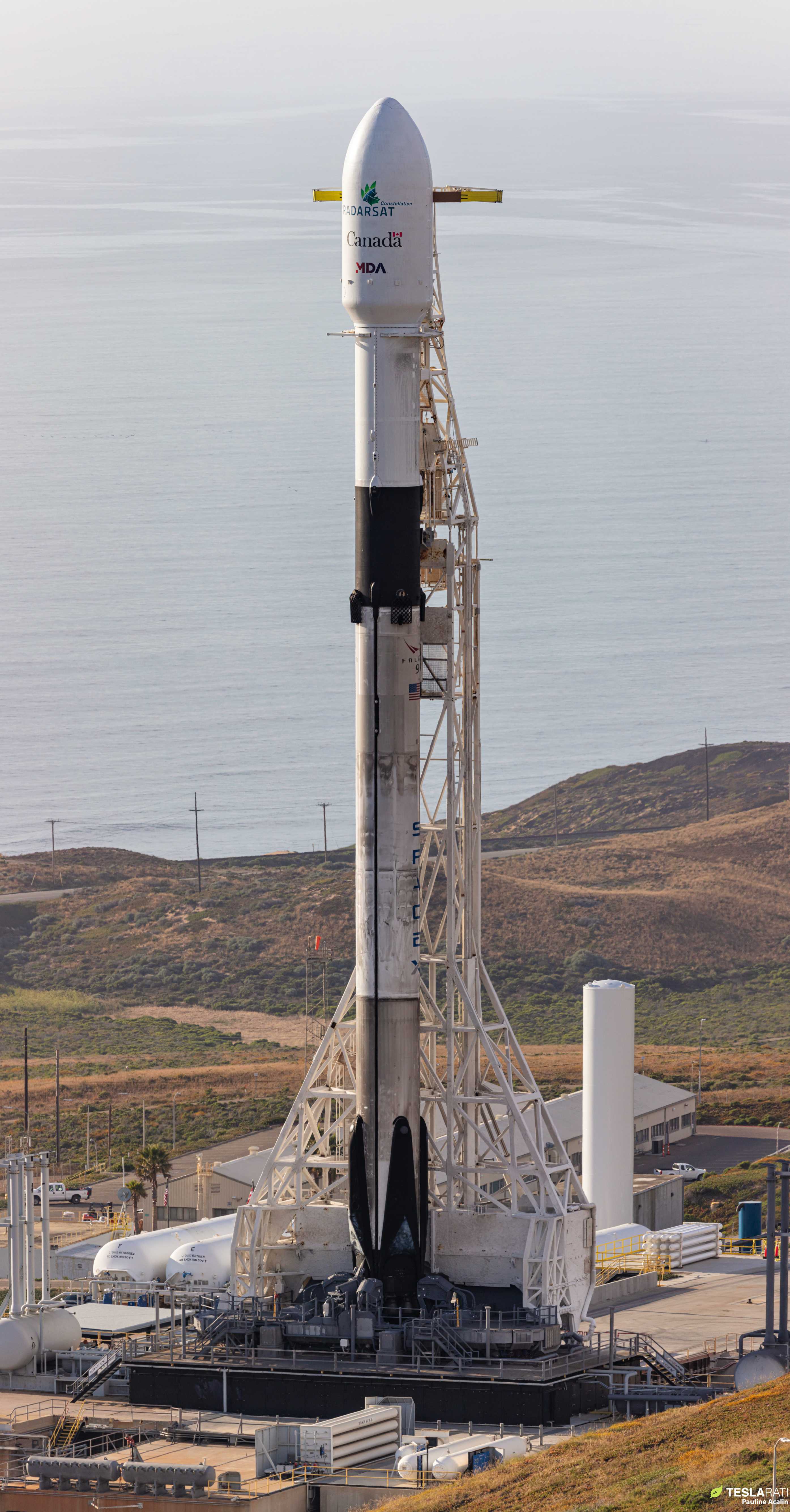
Check out Teslarati’s Marketplace! We offer Tesla accessories, including for the Tesla Cybertruck and Tesla Model 3.

News
Tesla Full Self-Driving (FSD) testing gains major ground in Spain
Based on information posted by the Dirección General de Tráfico (DGT), it appears that Tesla is already busy testing FSD in the country.
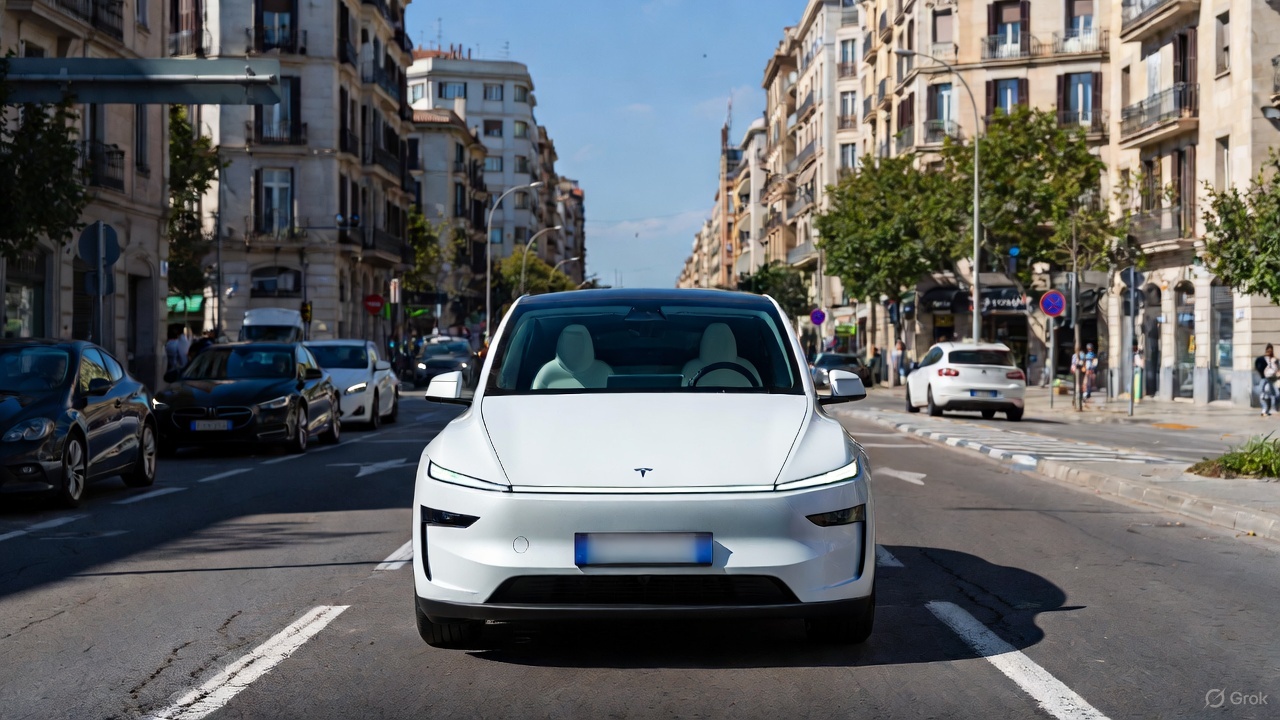
Tesla’s Full Self-Driving (Supervised) program is accelerating across Europe, with Spain emerging as a key testing hub under the country’s new ES-AV framework program.
Based on information posted by the Dirección General de Tráfico (DGT), it appears that Tesla is already busy testing FSD in the country.
Spain’s ES-AV framework
Spain’s DGT launched the ES-AV Program in July 2025 to standardize testing for automated vehicles from prototypes to pre-homologation stages. The DGT described the purpose of the program on its official website.
“The program is designed to complement and enhance oversight, regulation, research, and transparency efforts, as well as to support innovation and advancements in automotive technology and industry. This framework also aims to capitalize on the opportunity to position Spain as a pioneer and leader in automated vehicle technology, seeking to provide solutions that help overcome or alleviate certain shortcomings or negative externalities of the current transportation system,” the DGT wrote.
The program identifies three testing phases based on technological maturity and the scope of a company’s operations. Each phase has a set of minimum eligibility requirements, and applicants must indicate which phase they wish to participate in, at least based on their specific technological development.
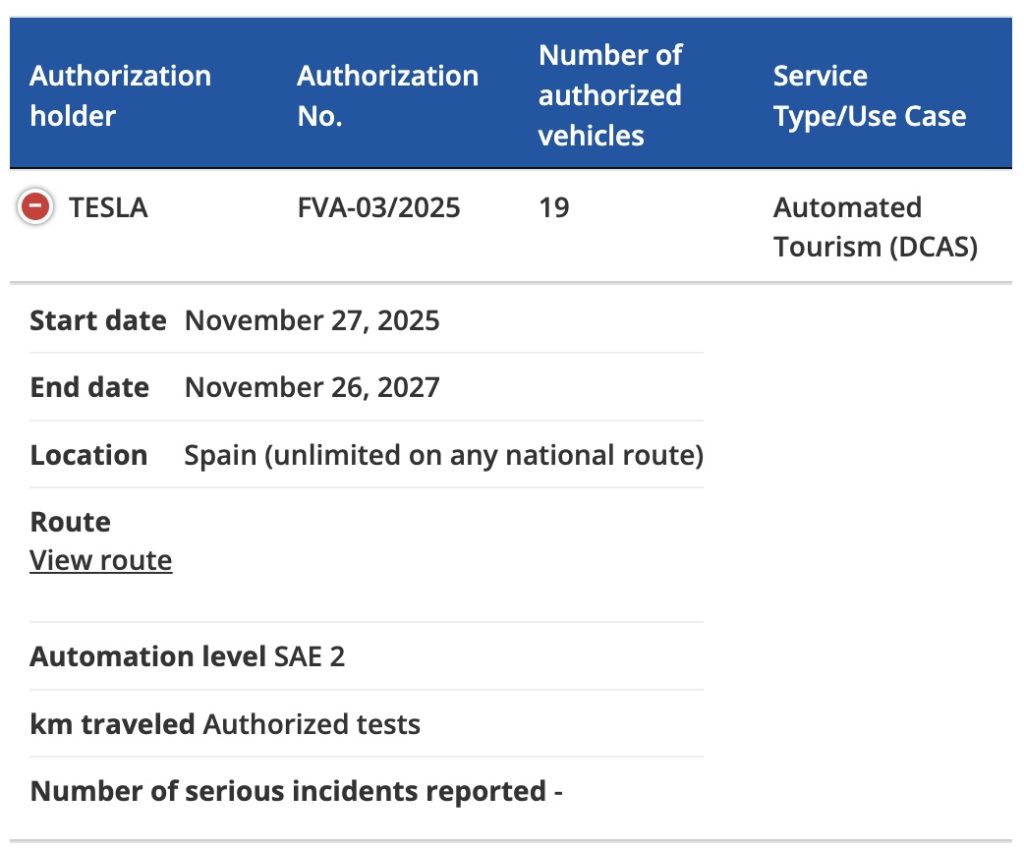
Tesla FSD tests
As noted by Tesla watcher Kees Roelandschap on X, the DGT’s new framework effectively gives the green flight for nationwide FSD testing. So far, Tesla Spain has a total of 19 vehicles authorized to test FSD on the country’s roads, though it would not be surprising if this fleet grows in the coming months.
The start date for the program is listed at November 27, 2025 to November 26, 2027. The DGT also noted that unlimited FSD tests could be done across Spain on any national route. And since Tesla is already in Phase 3 of the ES-AV Program, onboard safety operators are optional. Remote monitoring would also be allowed.
Tesla’s FSD tests in Spain could help the company gain a lot of real-world data on the country’s roads. Considering the scope of tests that are allowed for the electric vehicle maker, it seems like Spain would be one of the European countries that would be friendly to FSD’s operations. So far, Tesla’s FSD push in Europe is notable, with the company holding FSD demonstrations in Germany, France, and Italy. Tesla is also pushing for national approval in the Netherlands in early 2026.
News
Tesla FSD V14.2.1 is earning rave reviews from users in diverse conditions
Tesla’s Full Self-Driving (Supervised) software continues its rapid evolution, with the latest V14.2.1 update drawing widespread praise.

Tesla’s Full Self-Driving (Supervised) software continues its rapid evolution, with the latest V14.2.1 update drawing widespread praise for its smoother performance and smarter decision-making.
Videos and firsthand accounts from Tesla owners highlight V14.2.1 as an update that improves navigation responsiveness, sign recognition, and overall fluidity, among other things. Some drivers have even described it as “more alive than ever,” hinting at the system eventually feeling “sentient,” as Elon Musk has predicted.
FSD V14.2.1 first impressions
Early adopters are buzzing about how V14.2.1 feels less intrusive while staying vigilant. In a post shared on X, Tesla owner @LactoseLunatic described the update as a “huge leap forward,” adding that the system remains “incredibly assertive but still safe.”
Another Tesla driver, Devin Olsenn, who logged ~600 km on V14.2.1, reported no safety disengagements, with the car feeling “more alive than ever.” The Tesla owner noted that his wife now defaults to using FSD V14, as the system is already very smooth and refined.
Adverse weather and regulatory zones are testing grounds where V14.2.1 shines, at least according to testers in snow areas. Tesla watcher Sawyer Merritt shared a video of his first snowy drive on unplowed rural roads in New Hampshire, where FSD did great and erred on the side of caution. As per Merritt, FSD V14.2.1 was “extra cautious” but it performed well overall.
Sign recognition and freeway prowess
Sign recognition also seemed to show improvements with FSD V14.2.1. Longtime FSD tester Chuck Cook highlighted a clip from his upcoming first-impressions video, showcasing improved school zone behavior. “I think it read the signs better,” he observed, though in standard mode, it didn’t fully drop to 15 mph within the short timeframe. This nuance points to V14.2.1’s growing awareness of temporal rules, a step toward fewer false positives in dynamic environments.
FSD V14.2.1 also seems to excel in high-stress highway scenarios. Fellow FSD tester @BLKMDL3 posted a video of FSD V14.2.1 managing a multi-lane freeway closure due to a police chase-related accident. “Perfectly handles all lanes of the freeway merging into one,” the Tesla owner noted in his post on X.
FSD V14.2.1 was released on Thanksgiving, much to the pleasant surprise of Tesla owners. The update’s release notes are almost identical to the system’s previous iteration, save for one line item read, “Camera visibility can lead to increased attention monitoring sensitivity.”
News
Tesla FSD Supervised ride-alongs in Europe begin in Italy, France, and Germany
The program allows the public to hop in as a non-driving observer to witness FSD navigate urban streets firsthand.
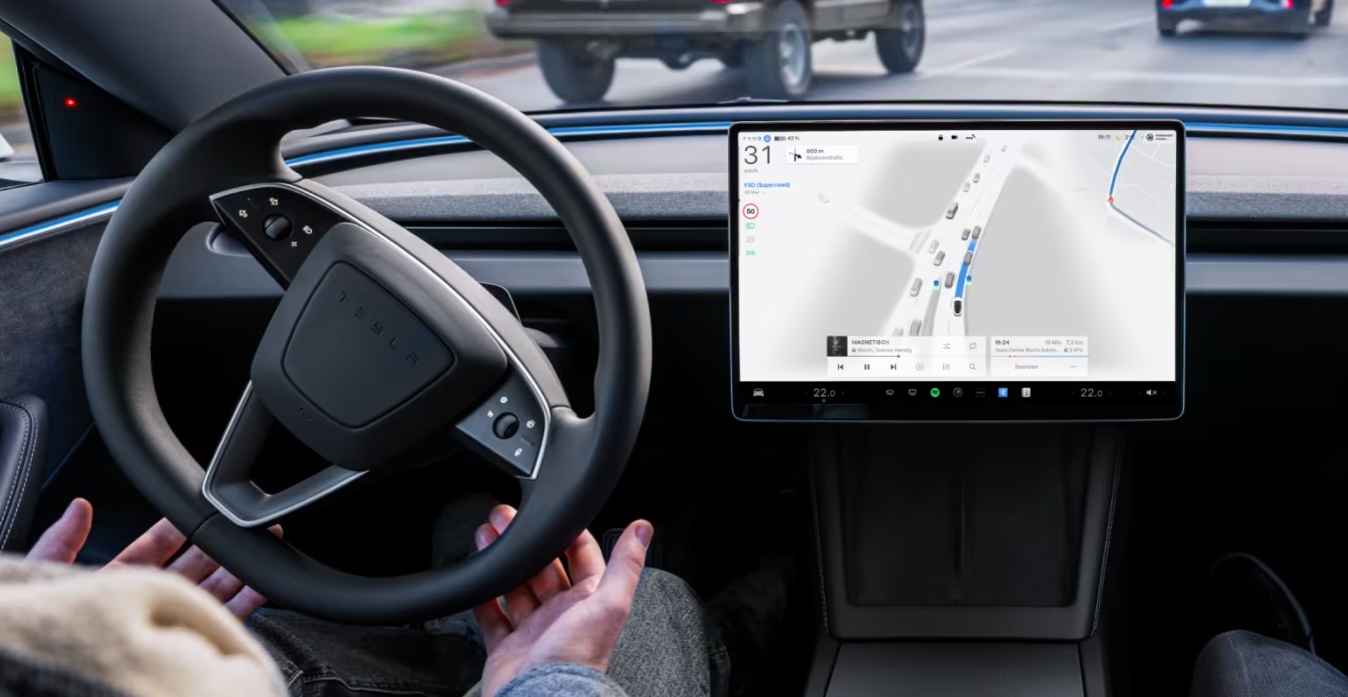
Tesla has kicked off passenger ride-alongs for Full Self-Driving (Supervised) in Italy, France and Germany. The program allows the public to hop in as a non-driving observer to witness FSD navigate urban streets firsthand.
The program, detailed on Tesla’s event pages, arrives ahead of a potential early 2026 Dutch regulatory approval that could unlock a potential EU-wide rollout for FSD.
Hands-Off Demos
Tesla’s ride-along invites participants to “ride along in the passenger seat to experience how it handles real-world traffic & the most stressful parts of daily driving, making the roads safer for all,” as per the company’s announcement on X through its official Tesla Europe & Middle East account.
Sign-ups via localized pages offer free slots through December, with Tesla teams piloting vehicles through city streets, roundabouts and highways.
“Be one of the first to experience Full Self-Driving (Supervised) from the passenger seat. Our team will take you along as a passenger and show you how Full Self-Driving (Supervised) works under real-world road conditions,” Tesla wrote. “Discover how it reacts to live traffic and masters the most stressful parts of driving to make the roads safer for you and others. Come join us to learn how we are moving closer to a fully autonomous future.”
Building trust towards an FSD Unsupervised rollout
Tesla’s FSD (Supervised) ride-alongs could be an effective tool to build trust and get regular car buyers and commuters used to the idea of vehicles driving themselves. By seating riders shotgun, Tesla could provide participants with a front row seat to the bleeding edge of consumer-grade driverless systems.
FSD (Supervised) has already been rolled out to several countries, such as the United States, Canada, Australia, New Zealand, and partially in China. So far, FSD (Supervised) has been received positively by drivers, as it really makes driving tasks and long trips significantly easier and more pleasant.
FSD is a key safety feature as well, which became all too evident when a Tesla driving on FSD was hit by what seemed to be a meteorite in Australia. The vehicle moved safely despite the impact, though the same would likely not be true had the car been driven manually.









